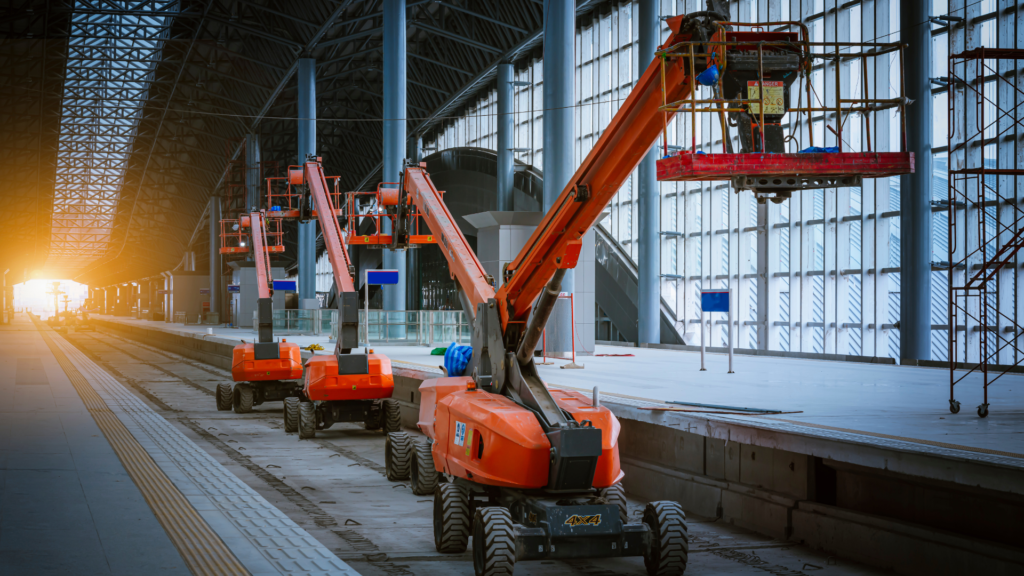So what exactly is a scissor lift anyway?
Let’s break it down. It’s not a fancy stage prop, it’s a powered platform that moves up and down in a crisscross (aka “scissor”) motion. And it’s not just for construction crews. Scissor lifts are MVPs in maintenance, entertainment, and even hospitals.
- Construction: Hanging signs, painting, electrical installs.
- Maintenance: Changing bulbs, HVAC access, deep cleaning.
- Entertainment: Rigging, stage lighting, and event setup.
- Healthcare: Hard-to-reach spots in hospitals and clinics.
Picking the right lift is half the safety battle
Not all lifts are created equal. Choose the wrong one, and you’re just one bad tilt away from a workers’ comp claim. Here’s your cheat sheet:
- Platform height: Can it actually reach where you need it to?
- Weight capacity: You, your gear, and your dignity should all fit comfortably.
- Application: Tight spots need narrow lifts. Outdoor? Go rough terrain.
- Power source: Electric for indoors, diesel for heavy-duty jobs.
Which scissor lift fits your vibe?
- Electric: Clean, quiet, and built for indoor glory.
- Rough Terrain: Beast mode on wheels for the great outdoors.
- Diesel: Loud, proud, and heavy-duty approved.
- Hydraulic: Compact and simple. Think entry-level but reliable.
- Pneumatic: No electricity? No problem. Compressed air to the rescue.
Training isn’t optional, it’s your insurance policy
If you’re skipping training, you’re not saving time, you’re inviting OSHA to your job site with a fine in hand. Here’s what your people need to know:
- Pre-use checklists
- How to not treat the lift like a carnival ride
- Emergency exits and controls
- Proper material handling
- How not to defy gravity with poor load placement
Let’s talk about fall protection, because gravity never takes a day off
- Guardrails: They’re there for a reason. Use them.
- No stunt work: Never stand or sit on the rails. You’re not auditioning for a circus.
- Platform etiquette: Stay inside the lines. Literally.
Keep your lift stable, or prepare for a wild ride
- Flat ground only: This isn’t off-roading. Keep it level.
- No overloads: It’s a lift, not a miracle worker.
- Distribute the weight: Uneven loads make unstable platforms.
- Outriggers: Deploy them when the ground says, “I don’t got you.”
Positioning matters, because power lines don’t play
- Look up: Power lines, beams, and other overhead drama.
- Maintain 10 feet clearance: Because electrocution isn’t on the task list.
- Use ground guides: Especially in tight or cluttered spaces.
- Stay still: No driving while elevated. This isn’t a parade float.
Maintenance is your secret weapon
- Stick to the manual: Not just for IKEA furniture.
- Lower before repair: No one wants a mid-air maintenance mishap.
- Power down: De-energize before you open anything up.
And while we’re at it, here’s another course you’ll want to check out
Before you even step on that platform, level up your crew’s aerial IQ with the MEWPs: Safe Operation of Aerial Lifts Training Course. Because knowing the difference between a boom and a scissor could save a life, or at least your company’s rep.
Expand your knowledge
Scissor lifts are essential tools, but they demand respect. Know your lift, know your risks, and train like it matters. Because it absolutely does.
Expand your knowledge with our MEWPs: Safe Operation of Scissor Lifts Training Course.
References

